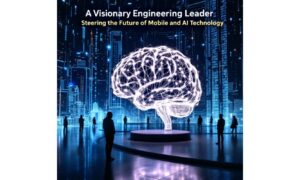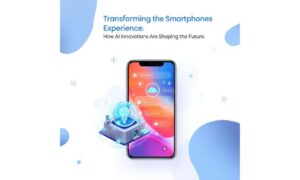What Are the Most Impressive Recent Technological Breakthroughs in AI?
To showcase the most impressive recent AI breakthroughs, we reached out to industry leaders and professionals from various backgrounds. From MuZero’s video compression breakthrough to AI summarizing audio content, here are the top 18 technological advancements in AI, as shared by founders, CEOs, and other experts in the field.
- MuZero’s Video Compression Breakthrough
- AI Accessibility Tools for Disabilities
- DeepMind’s AlphaFold Revolutionizes Biology
- AI Enhances Smart Home Safety
- Autonomous Vehicles Transform Transportation
- Advances in Computer Vision Technology
- Natural Language Processing Progress
- DeepMind’s AlphaCode for Coding
- AI-Driven Personalized Nutrition
- Neuromorphic Computing’s Potential
- Advanced AI Conversational Agents
- Neural Architecture Search Benefits
- GPT-3’s Impressive Language Skills
- AI and Quantum Computing Breakthroughs
- GANs for Image Generation
- Preserving Integrity With Deepfake Detection
- Recruitment Technology With Chatbots
- AI Summarizes Audio Content
MuZero’s Video Compression Breakthrough
The creation of MuZero has been making waves in the AI community with its ability to master complex games like Chess, Shogi, Atari, and strategy-based ones such as Starcraft.
Recently it has taken on a new challenge: video compression. Its efforts resulted in an average reduction in data required by a staggering 4%, quite impressive considering that standard compression codecs took decades to develop.
With video streaming dominating internet traffic streams in 2021 and usage set to skyrocket moving forward, more efficient video compression could prove invaluable by reducing streaming expenses while increasing download energy efficiency.
Nikola Baldikov, Founder, InBound Blogging LTD
AI Accessibility Tools for Disabilities
The integration of AI has brought forth even more many remarkable possibilities for people with disabilities. Some excellent AI-driven accessibility tools have been very impressive these previous years. For example, the Be My Eyes app has become an invaluable tool for the blind and has been increasingly more available and accessible to PWDs.
Through AI, it is also now even more possible to produce realistic text-to-speech capabilities, image-to-audio conversion, improved video transcriptions, and particularly, the newly announced Microsoft Office Copilot. With this advancement, the potential to accomplish more with text increases significantly, and that also extends to voice-based interactions.
Perhaps, if such a technology were integrated with something like glasses equipped with a camera or a camera attached elsewhere, it could even serve as a personal assistant, providing detailed descriptions of the surroundings.
Paw Vej, Chief Operating Officer, Financer.com
DeepMind’s AlphaFold Revolutionizes Biology
One of the most impressive recent technological breakthroughs in AI is DeepMind’s AlphaFold. AlphaFold is an AI system that has solved a 50-year-old grand challenge in biology by predicting the 3D structure of proteins from their genetic sequence. This breakthrough could help speed up the development of new drugs and treatments for diseases.
Ranee Zhang, VP of Growth, Airgram
AI Enhances Smart Home Safety
AI is providing exciting technology that will affect homeowners like never before. As smart homes become more and more prevalent, the technology continues to evolve. But perhaps the most useful is how homeowners can control many aspects of their smart systems when they’re away. This has increased home safety, among a myriad of other aspects.
Daniel Osman, Head of Sales and Operations, Balance
Autonomous Vehicles Transform Transportation
One of the most impressive recent AI breakthroughs is the advancement of autonomous vehicles. Companies like Tesla and Waymo have made remarkable progress in developing self-driving cars that can navigate and make decisions without human intervention.
These vehicles utilize sophisticated AI algorithms, computer vision, and sensor fusion to analyze road conditions, perceive the environment, and make real-time decisions. Autonomous vehicles have the potential to greatly enhance road safety, reduce human errors, and create more efficient transportation systems.
The complexity of the AI technology involved, coupled with the challenges of ensuring safety and regulatory compliance, make this breakthrough truly remarkable. The ongoing development of autonomous vehicles showcases the transformative impact of AI on the future of transportation.
Josh Amishav, Founder and CEO, Breachsense
Advances in Computer Vision Technology
Computer vision is a fascinating area within AI that has seen significant leaps in advances lately. Deep Learning networks have enabled some amazing capabilities around object detection/classification based on images/videos as well as facial recognition technology.
An example of an early success story here is Google’s AlphaGo system being able to defeat world champion Lee Sedol at Go back in 2016 by using supervised deep learning techniques along with Reinforcement Learning algorithms. This showed just how far AI technology had come when it comes to complex strategy games or decision-making situations where previous solutions were simply not possible before!
Travis Lindemoen, Managing Director, nexus IT group
Natural Language Processing Progress
Natural Language Processing (NLP) is one of the primary areas where recent advances in AI technology have been focused on. NLP allows machines to understand human language by analyzing context, intent, sentiment, and other factors related to human communication.
By gaining a better understanding of natural language, machines can more accurately respond with relevant information or insights derived from large data sets.
Rick Elmore, CEO, Simply Noted
DeepMind’s AlphaCode for Coding
An AI company called DeepMind created AlphaCode, an AI algorithm that can code better than 72% of humans. It can also solve around 30% of coding problems. This might seem low, but keep in mind that AlphaCode is still learning, so this number will probably increase in the future.
Because AlphaCode can produce code with a high level of efficiency and accuracy, it’ll save you time and effort, allowing you to get more done in less time.
Scott Lieberman, Owner, Touchdown Money
AI-Driven Personalized Nutrition
A notable technological breakthrough in AI, specifically in the health and nutrition industry, is the use of personalized nutrition plans based on genetic testing by companies like Nutrigenomix and DNAfit.
This method analyzes an individual’s genetic makeup and health profile to create customized nutrition recommendations. Additionally, AI algorithms are being used to analyze vast datasets of food intake and health outcomes to identify correlations between certain foods or nutrients and health outcomes.
This research has the potential to inform public health policy and improve individuals’ decision-making regarding their diet and lifestyle. Overall, AI has shown great potential for revolutionizing the nutrition industry.
Adam Wright, CEO, Human Tonik
Neuromorphic Computing’s Potential
Neuromorphic computing is a recent technological breakthrough in AI that holds immense promise. Unlike traditional computer chips, which use a binary system of ones and zeros, neuromorphic chips are designed to mimic the way that neurons in the brain communicate with each other.
This means that they are able to process information in a more natural and efficient way, making it possible for computers to perform tasks that were previously impossible.
For example, neuromorphic computing could be used to enable machines to recognize patterns in complex data sets, which could have significant applications in fields such as healthcare, finance, and transportation. The ability to process information in a way that is more similar to the way that humans do could also lead to advances in speech and image recognition, making it easier for machines to understand and interact with humans.
Luciano Colos, Founder and CEO, PitchGrade
Advanced AI Conversational Agents
The most impressive recent technological breakthrough in AI is the development of advanced virtual agents. These AI-driven conversational agents have significantly evolved in recent years, enabling them to understand and respond to complex human inquiries with remarkable accuracy.
By leveraging natural language processing (NLP) and machine learning algorithms, virtual agents can now engage in more human-like interactions, providing better customer service, personalized recommendations, and efficient problem-solving.
This breakthrough has a broad range of applications across various industries, including customer support, sales, and healthcare, revolutionizing the way businesses and organizations interact with their customers and clients.
Jaya Iyer, Marketing Assistant, Teranga Digital Marketing
Neural Architecture Search Benefits
When we were creating our own AI system for financial research, I personally witnessed the effects of NAS. We could improve the design of our neural networks by utilizing NAS approaches, which led to better accuracy and performance. We could automate selecting the ideal neural network design thanks to NAS, which helped us save a lot of time and money.
Additionally, NAS has given researchers and developers from numerous sectors the tools they need to explore uncharted waters in AI. By automating the building of neural networks, NAS gets rid of human biases and intuition, resulting in more reliable and effective models.
Percy Grunwald, Co-founder, Compare Banks
GPT-3’s Impressive Language Skills
GPT-3 (Generative Pre-trained Transformer 3), a language model created by OpenAI, is one of the most astounding recent technological advances in AI. A neural network-based model called GPT-3 is trained on a ton of data to produce verbal responses to varied stimuli that resemble those of a human being.
GPT-3 is regarded as a breakthrough since it can produce text that is impossible to tell apart from human-written language because it is so similar. GPT-3, which outnumbers its predecessor GPT-2 by a factor of ten, is the largest language model ever developed with over 175 billion parameters. The model exhibits outstanding accuracy and fluency when producing natural language material, including articles, stories, and even code. Chatbots, software for translating languages, and even tools for creative writing have all been created using GPT-3.
Vikas Kaushik, CEO, TechAhead
AI and Quantum Computing Breakthroughs
The integration of AI with quantum computing represents a significant breakthrough. Quantum machine learning, an emerging field, is poised to revolutionize areas like material science and cryptography by processing complex computations in a fraction of the time traditional computers would require.
Aysu Erkan, Social Media Manager, Character Calculator
GANs for Image Generation
One of the most impressive recent technological breakthroughs in artificial intelligence (AI) is generative adversarial networks (GANs). GANs are a type of AI that use two neural networks, a generator, and a discriminator, to generate new data from existing data. The generator creates novel samples, such as images or text, which are then evaluated by the discriminator network. The discriminator then provides feedback to the generator, allowing it to learn and improve its accuracy over time.
In recent years, GANs have enabled incredible advances in computer vision, natural language processing, and other types of AI technology. For computer vision, GANs have been used to generate realistic-looking images from text descriptions. They can also be used for natural language processing tasks such as automatic summarization and question answering. In addition, GANs are being used to create novel audio samples that sound indistinguishable from real-world recordings.
Srinjoy Nandy, Digital Marketer, ClinicSpots
Preserving Integrity With Deepfake Detection
Deepfake detection is the ability of AI-based algorithms to identify and mitigate deepfake content is a significant technological breakthrough.
Deepfakes are highly realistic manipulated media that can deceive or spread misinformation. The development of advanced AI algorithms that can detect and flag deep fakes helps in combating the spread of fake information and preserving the integrity of digital media. This breakthrough has important implications for various domains, including media, politics, and cybersecurity.
Jason Cheung, Operations Manager, Credit KO
Recruitment Technology with Chatbots
The latest technological breakthrough in AI has to be recruitment technology; it is by far among the most impressive. The best candidates for a job are found using this technology’s machine learning algorithms, which examine applications, job advertisements, and other relevant information.
Additionally, it makes impartial and more effective screening procedures easier. The way businesses interact with potential applicants has also been altered by AI-powered chatbots, which offer a more efficient and individualized experience.
Wendy Makinson, HR Manager, Joloda Hydraroll
AI Summarizes Audio Content
AI can now listen to audiobooks or podcasts and summarize all the important details for you. This is pretty incredible as you can skip through all the fluff, save time reading or listening. It’s a game-changer for knowledge sourcing and potentially for networking as well.
Simon Bacher, CEO, Co-founder, Ling App
Related Articles
- What Are the Top Limitations of Artificial Intelligence?
- What Are Examples of Artificial Intelligence in Healthcare?



































